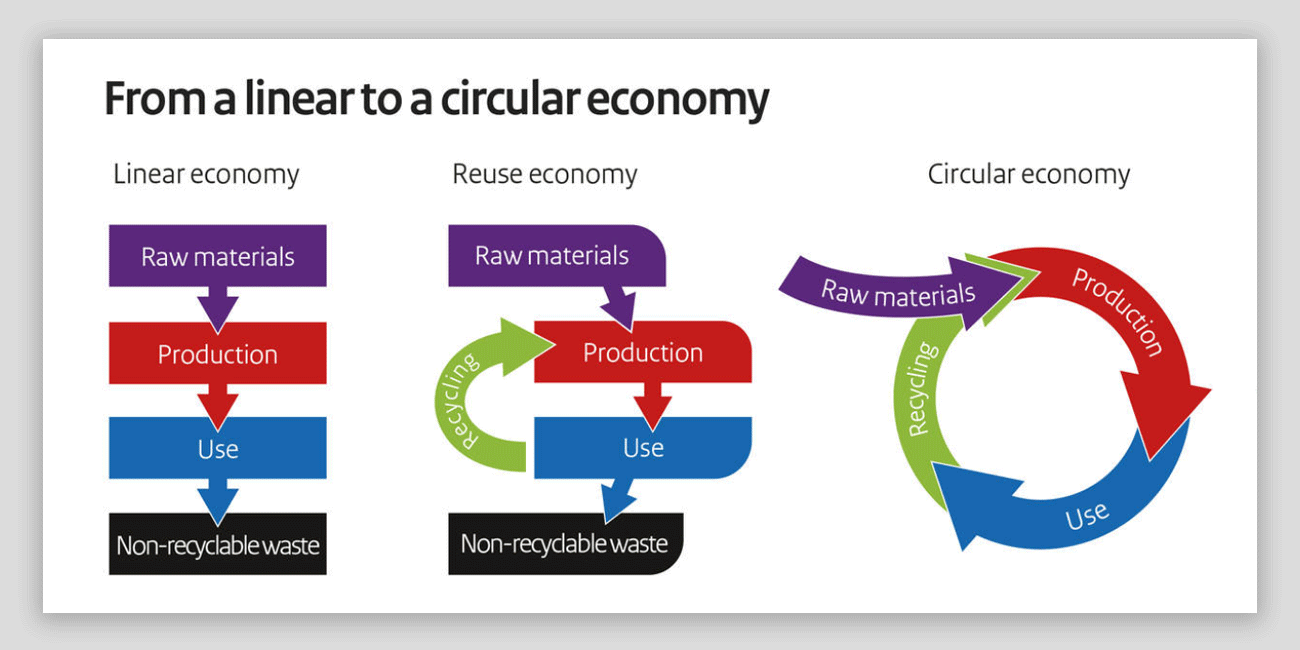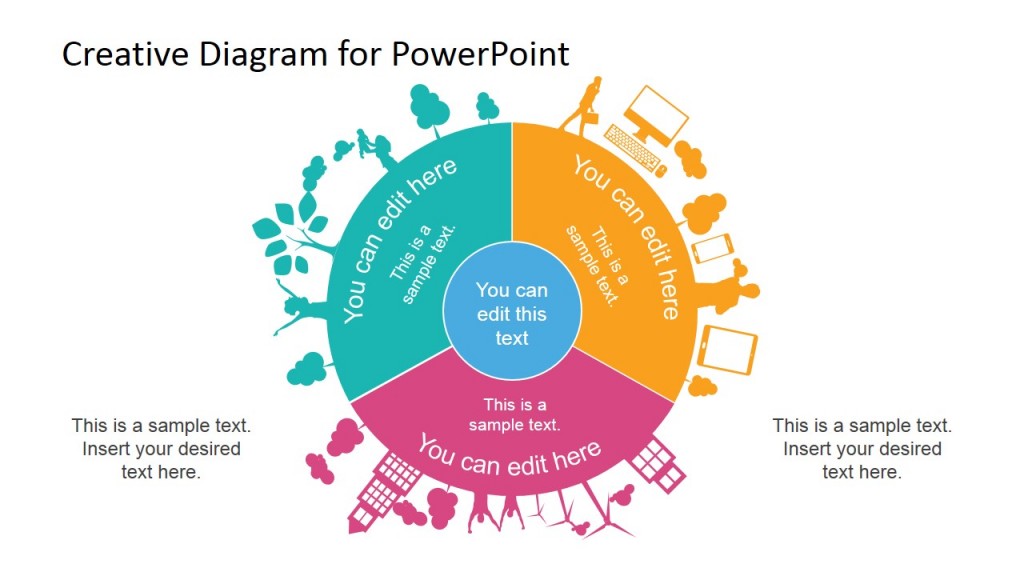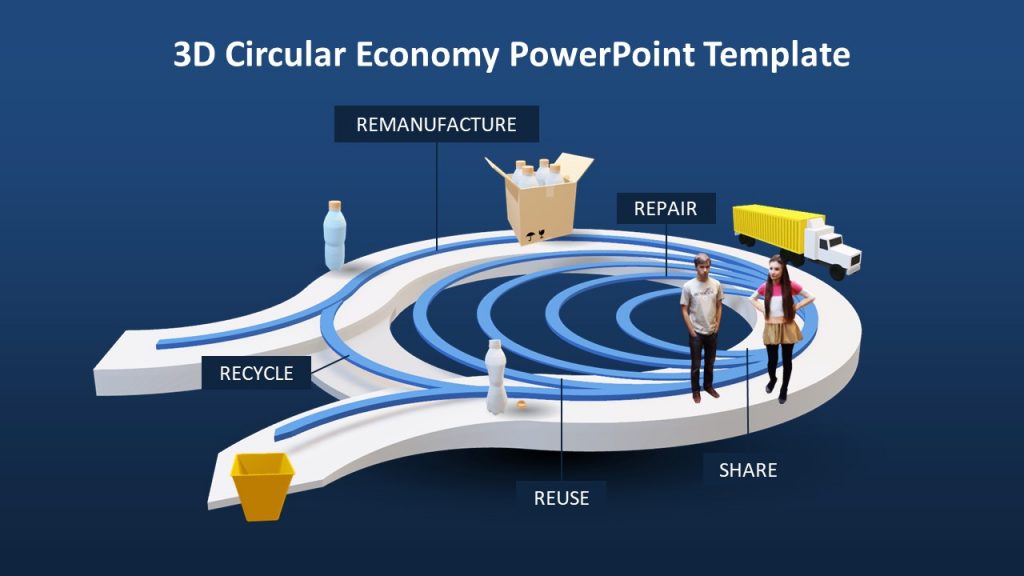
What is the Circular Economy?
The circular economy is an economic model based on eliminating waste and making the economy more sustainable. The model is a diversion from the linear economy, which focuses merely on the take, make, consume and dispose of method. But can the circular economy model save the planet? Let’s find out if it can! To understand the circular economy and if it can be the answer to saving the planet, let’s first take a close look at what the circular economy is?
A System which Promotes Reduction of Waste
The circular economy consists of a system where there is an emphasis on the reduction of waste, reuse and recycling. This can help put in place environmentally friendly practices, increase the longevity of items and encourage reuse instead of throwing away things that might be deemed outdated. It is worth mentioning here that many businesses emphasize the need for quickly updating products to drive sales, without considering the impact of such consumerism on the environment and long-term sustainability of economies, which might become dependent on this type of consumerism. For example, many people annually switch their smartphones to the latest model, whereas the old model isn’t exactly obsolete but can be used for many more years.

Source: Europa.eu
Benefits Both the Environment and Businesses
The circular economy not only benefits the environment but also businesses, where biodegradable content goes back to nature and the non-biodegradable material is simply reused or recycled. It promotes the concept of finding the use of parts that can be salvaged, things that can be repaired, and recycled. This itself can give rise to entire industries engaged in the efficient use and reuse of products.
Source: Example of Circular Economy presentation template created as an Animated 3D PowerPoint template
The Linear Model Vs Circular Economy
There are various parallels between the circular and linear models. It will not be wrong to consider both models as the exact opposite of each other. Let’s take a look at a few differences between both models.
Produce, Consume, Throwaway Vs Repair, Reuse and Recycle
The traditional production and consumption system has long included the produce, consume and throw away mechanism, which restricts products to single-use. On the contrary, the circular model aims at reducing waste, reusing and recycling material and reducing waste. In fact, waste in a circular model is converted back into products.

Source: https://www.government.nl
Resource-Intensive Vs Resource-Efficient
The circular economy model is arguably more resource-efficient, as compared to the resource-intensive linear model. The latter relies on resource-intensive modes of production for producing single use products. Whereas, the circular model aims at reducing waste and making the most efficient use of resources.
Environmentally Harmful Vs Environmentally Friendly
Unlike the linear model, the circular economy relies on the efficient use of resources from the design, acquisition of raw material, production, transport and delivery stage. Hence, the circular model aims at making the process as efficient and environmentally friendly as possible at all stages that comprise the production to the delivery of the product to the consumer. The resources used can be reused in the circular economy model, including the reuse of products even during the production stage.
Benefits of Circular Economy
Protection of Environment and Biodiversity
Since the circular model caters for protecting the environment and biodiversity, it can result in several long-term positive externalities. This can include the benefits of consumers, businesses and the environment. For example, the circular system of the economy uses farm waste to produce sustainable energy using biomass or the use of such remnants as fertilizer for crops.
This can help reduce reliance on harmful chemicals, increase organic and healthy production of crops and enable the production of cheap electricity. Moreover, the positive environmental impact can help reduce degradation of soil, enable a mechanism where wildlife and their habitats are sustained due to a reduction in overconsumption and provide a more natural environment for flora and fauna to thrive. The circular economy can generate growth from resources discarded or no longer in use, reduce reliance on single-use items such as single-use plastic and create continuous cycles of sustainable products.
Creation of Stable Businesses and Jobs
There have been instances when large corporations have collapsed due to a sharp decline in the demand for their goods or services. This often happens as unsustainable consumption patterns hit a roadblock. The global financial crisis in 2008 is one such example, where the credit crunch can be blamed on similar practices, where excessive risk-taking by banks led to a financial crisis that affected businesses and jobs globally. Encouraging overconsumption often means asking people to spend money they don’t have and buy products they don’t need. This leads to a short-term rise in profits and creates unsustainable jobs which decline as soon as the pattern of overconsumption hits a peak. However, the circular economic model can help create sustainable businesses and jobs which are stable and need not rely on overconsumption and unsustainable patterns of production.
Increase in Living Standards and Quality of Life
The circular model can lead to an increase in the quality of life and arguably living standards by minimizing the emission of toxic gases and reduction in hazardous farming methods leading to a plethora of modern diseases. The circular model imitates nature, where everything has a purpose and nothing goes to waste. Following a similar model can help in improving the quality of food, air, water and producing products that are sustainable, healthy and profitable.
Tackling Global Warming and Climate Change
Currently, there are many cities in the world such as Delhi and Beijing where the air quality has touched alarming levels of toxicity and it has become hard for people to breathe out in the open. The scenes from some modern metropolitan cities resemble a surreal picture where human life appears unsustainable, life expectancies are likely to decrease and the welfare of the general public seems to be at risk because of environmental degradation. This is one reason why the linear model is now being deemed as obsolete, since overproduction and increased, unsustainable consumption patterns can no longer be catered for in the wake of environmental degradation. A minor increase of 2°C of global temperature can have a catastrophic effect, leading to increased droughts, floods, food shortages and displacements due to rising sea levels. It is believed by scientists that such a rise in global temperature could result in the collapse of the ecosystem, affecting a third of all life on the planet. Hence, a circular economic model seems like one of the few necessary steps required to tackle this phenomenon.
Sustainable Model for Protecting Future Generations
It can be argued that the circular economy is the need of the hour and can be the sustainable model for future generations. This can be explained by a simple concept of economics that discusses “wants” and “needs”. The concept argues that wants are unlimited and insatiable, whereas basic needs are finite and can be catered for. The linear model has long emphasized the “unlimited wants” and has thrived on creating the need for things people don’t even need. Upgrading to the latest smartphone, laptop, TV or using expensive clothes that go out of fashion after a few seasons are examples of an unsustainable lifestyle which has led to not only a number of environmental but also health-related hazards for people around the world. As explained earlier, a mere 2°C rise in the global temperature is likely to have a devastating effect on the planet, hence an unsustainable linear model can no longer be catered for. On the contrary, the circular model emphasizes reuse, recycling, reduction in waste, use of renewable energy and a mechanism that keeps in view the effect on the environment to minimize negative externalities for goods and services. The circular economy is, therefore, a sustainable model, which can be used to protect future generations from the harmful effects of overproduction and overconsumption.

Source: United Nations Conference on Trade and Development Unctad.org
Final Words
Current projections show an estimated rise in the global population from 7.7 billion to 9.7 billion by 2050. Moreover, an estimated 2°C rise in global temperature by the end of the century is expected to result in the extinction of a third of all life on the planet. The circular economy can be a model that can help save the planet, however, it cannot be seen in isolation. The circular model is far more complex than the linear approach and requires a global workforce that is educated and able enough to use it and improve upon the current mechanisms of the model to make it as efficient and environmentally friendly as possible. Similarly, switching to cleaner, renewable sources of energy, promoting eco-friendly housing and consumption patterns will have to be promoted on a global scale, even when the aforementioned don’t strictly fall under the circular model. Hence, the circular economy is one of many steps needed to save the planet and it can certainly be deemed as one of the most significant mechanisms for saving the planet from an impending disaster.


